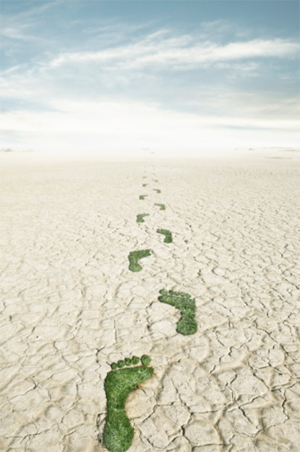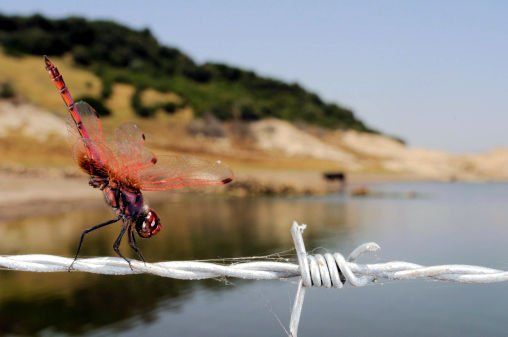Dec 26, 2025
Dec 26, 2025
 Climate, since the day our urban planet came into being has been constantly changing. Life has been experiencing and adapting to the vicissitudes of climate since eternity. One might think that if such was the case then why so much hullabaloo overclimate now! The answer is simple. Earlier when the planet underwent climatic upheavals most of the time the human beings were not there. In the process of severe climate changes many forms of life were lost and many more adapted to the changed climate/environment.
Climate, since the day our urban planet came into being has been constantly changing. Life has been experiencing and adapting to the vicissitudes of climate since eternity. One might think that if such was the case then why so much hullabaloo overclimate now! The answer is simple. Earlier when the planet underwent climatic upheavals most of the time the human beings were not there. In the process of severe climate changes many forms of life were lost and many more adapted to the changed climate/environment.
Since the arrival of humans on this planet it has witnessed warming and also the Ice age too. But since 17th century temperatures have been on the rise. Studies on climate change have indicated that global average temperature has shown an increase of approximately 1.4o F since early 20th century says A.K. Joshi and P.K. Joshi of TERI University, New Delhi. The authors state that the sea levels have been rising at an average rate of approximately 1.7 mm/year over the past 100 years. The rate of melting of glaciers and glacial retreat is also on the increase they claim.
Climate changes imperceptibly but majority of fauna and flora (other than human beings) perceive it and adapt as per the need. In case the change is rapid they lose the race and perish. Evidences are coming forth that in future the rate of climate change will be much faster. This is quite worrying. The consequences can be severe and prolonged droughts and unprecedented rainfall leading to catastrophic floods. As a result the lower species will adapt faster and change, which might affect our ability to use them as a food source.
The Himalayan region is warming at a faster rate than the global average claim the Joshi duo. Due to this warming, plants like Rhododendron, Lantana and Eupatorium species which occur at about 1000 maltitude are now found at 1800 m. There are several instances from Uttarakhand Himalayas where either the fruiting pattern has either changed or some varieties of fruits or even their trees have stopped growing. For example, Khirsu a small village located on a ridge at an altitude of 5000 feet near Pauri in Garhwal used to have a bumper crop of apples. Of late apples have stopped growing there since past three decades and barren trees have been hacked by the locals. Thus the present youth of Khirsu do not know how an apple tree looks like!
As a youngster I remember that Rhododendron used to flower in the months of March and April. A survey conducted by the above cited Joshi duo shows that now Rhododendron flowers a month or two earlier, that is during January and February. Similarly, now the size of the flowers too is reduced to 4-5 inches from 7-8 inches. In Kumaon Himalayas a popular wild berry like fruit grows on trees, locally called ‘Kaphal’. Around four decades ago, ‘Kaphal’ trees used to be laden with fruit in the months of May and June. Now the researchers report that the fruiting time has changed to March-April. Many of the wild berries like ‘Hisalu’ (in Uttarakhand) and ‘Achhu’ (in Himachal Pradesh) have almost stopped producing the fruit. Likewise many tree fodder species have also shown marked decline inproductivity. Consequently, the local community has to search alternative sources of fodder.
The change inpattern of fruiting or fodder or even firewood could be due to change in the climate pattern or it could be due to phonological changes in the vegetation. Either way it is the human society which gets affected.
Man has been dependent on rains for agriculture since the day he sowed his first seed. Alas in the past 4000 years the climate has seen lots of ups and downs. In the Himalayas the change in rainfall pattern has adversely affected the crops. Lack of winter rains affects the sowing of wheat in many areas. Similarly, other winter crops like gram and pulses cannot be sown for want of winter rains.

Instances are many and they all point to one fact, the climate is imperceptibly changing, consequently plants are trying to adapt to the new pattern. But some of the insects too have begun to reflect the change, by changing their habitat. Himalayan terrain was devoid of mosquitoes till about two decades ago. Now one can feel their sting even as late as in October up to the altitudes of 5500 feet. Anopheles mosquitoes thrive in hot and humid climate. The change in rainfall pattern and heavy rains during the last phase of monsoon seems to help the mosquitoes to multiply.
Earlier it used to drizzle throughout the day during monsoon and pour for some time. The process used to continue for about 60 to 70 days. Total average quantity of rainfall has not changed much, but the duration is reduced to 40 to 50 days. As such it suddenly pours and then again the Sun shines. Due to sudden pouring of water, much of it is lost as a runoff. Secondly the nutrient rich soil, which used to reach the fields in the valleys earlier, now gets lost and is carried to the river kin stead. Thus the cycle of natural soil enrichment has also appreciably changed.
Change is the law of nature. We have to understand that and adapt accordingly. Ways and means have to be developed to check the run off and also to store water. In Pithoragarh district, along Berinag-Rameshwar Ghat road, till about 40 years ago there was no dearth water. As such the area was agriculturally very rich. With the change in rainfall pattern and land use the situation has become bad. For want of water many crops are lost. The lush green vegetation used to support honeybees too. The area was rich in varieties of honey. Fodder was not scarce hence milch cattle and milk products were in plenty. Now all that is lost.
Enterprising villagers in the above area have constructed storage tanks for water and they are able to collect as much rain water as possible. In those localized patches prosperity is still abundant. A combined effort of the government and the society is required to meet the challenge.
Climate changeis inevitable. It is impossible to expect that the rainfall pattern will change again and the soils will get enough water to bear good crops. Local arrangements will have to be made to counter the water scarcity, loss of arable land due to erosion and the researchers will have to develop varieties of crops which require less water then only the future generation can survive and thrive in such terrains. Adaption according to the change in natures processes is the key for survivals. Plant and animal history is replete with examples where those who adapted survived and those who couldn’t had to perish. Therefore, nature’s warning should not be left unheeded.
Images (c) Gettyimages.com
29-May-2011
More by : V. K. Joshi (Bijji)